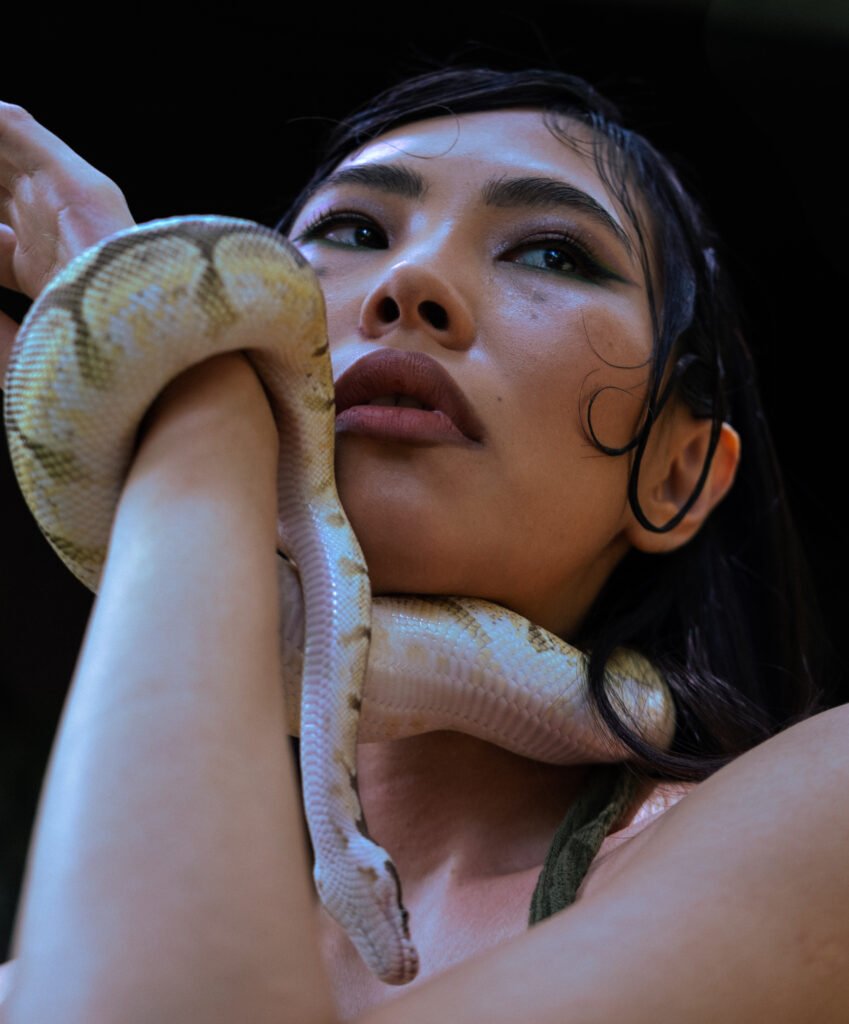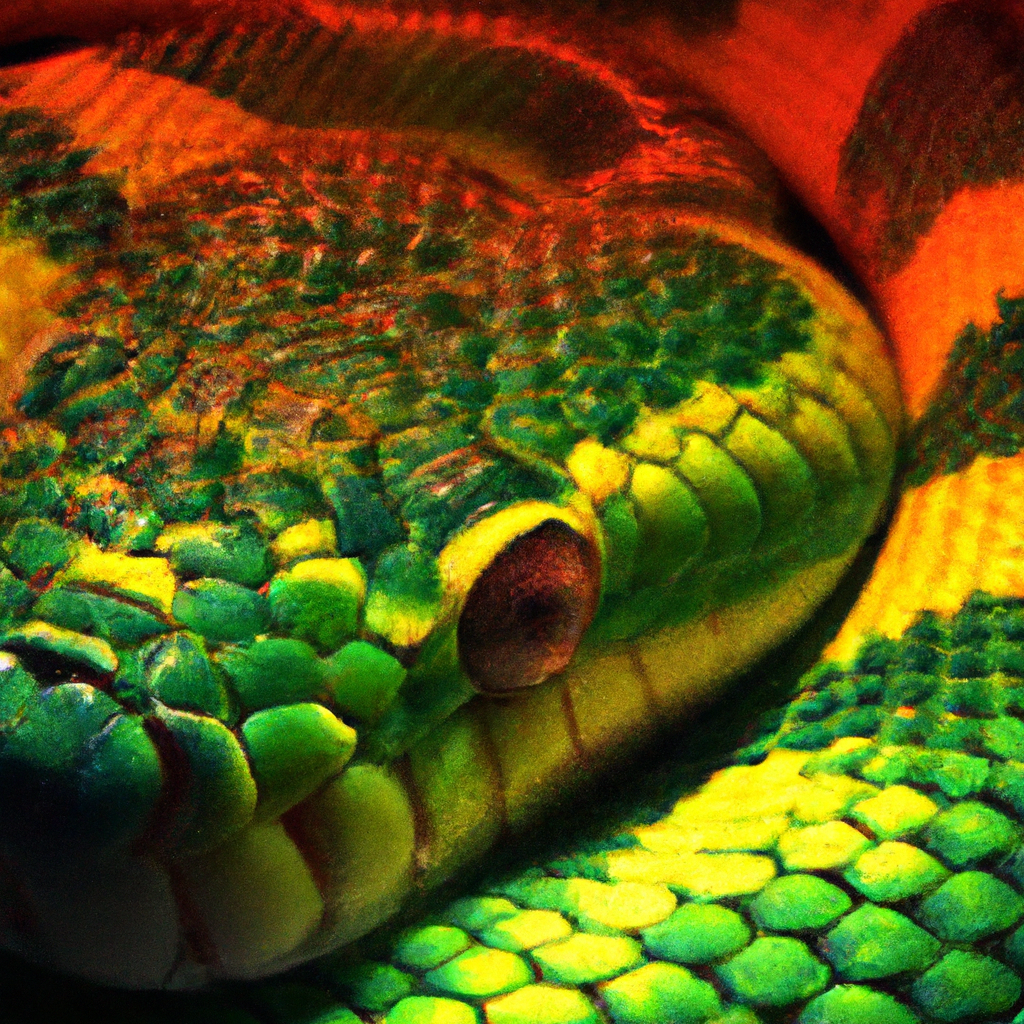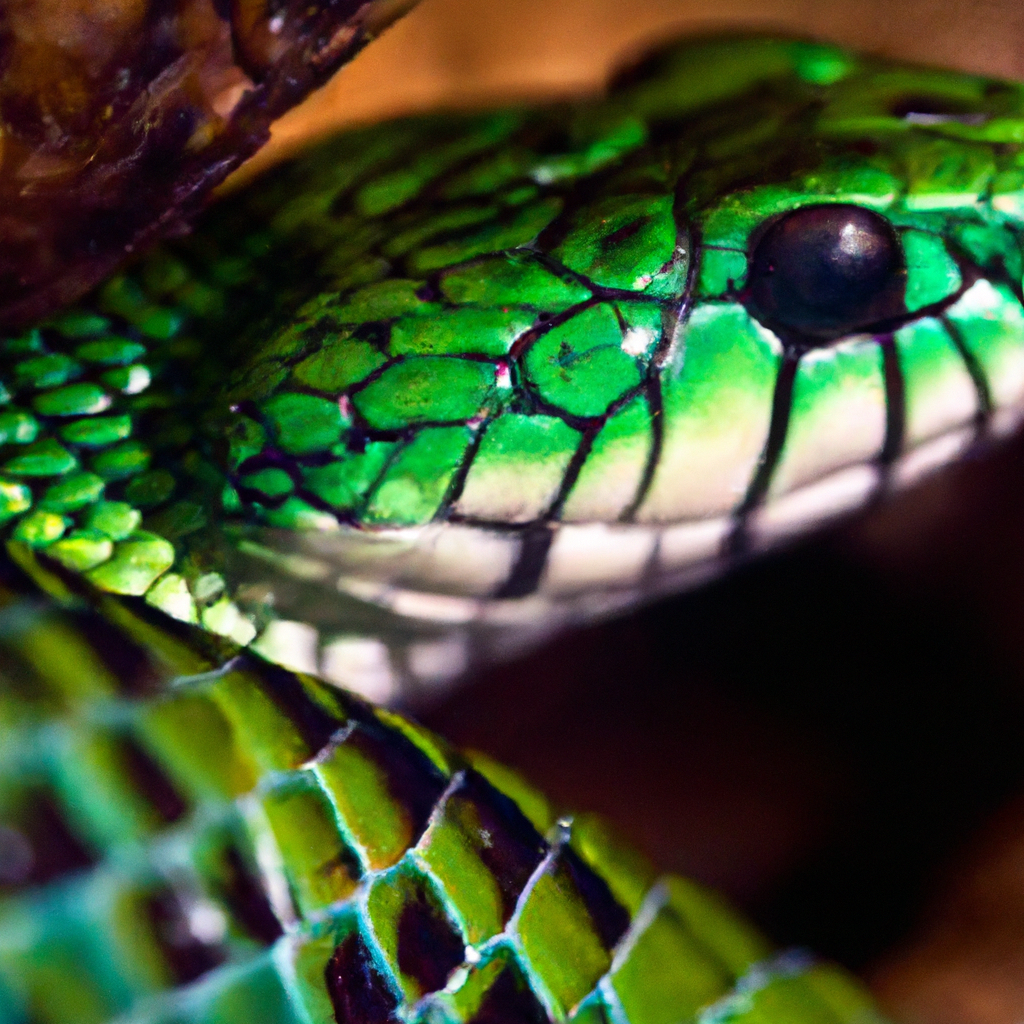Imagine yourself in a world of wonder, where vibrant and enchanting creatures lurk in the shadows. In this captivating article, we explore the fascinating realm of “Serpientes Exóticas.” Brace yourself as we delve into a universe where serpents bear a mystical allure, a place where curiosity intertwines with beauty, giving rise to a mesmerizing tapestry of exotic snakes. Prepare to be transported to a realm where serpents reign supreme and their allure will leave you spellbound.

Introduction
Welcome to the fascinating world of exotic snakes! If you’re someone who appreciates the beauty and allure of these unique creatures, then you’re in for a treat. Exotic snakes encompass a diverse range of species, each with its own distinct characteristics, behavior, and care requirements. In this comprehensive article, we will explore the various types of exotic snakes, their physical features and behavioral traits, popular snake breeds, as well as the challenges and safety precautions involved in keeping these captivating creatures as pets. So grab a cup of tea, get comfortable, and let’s dive into the enchanting realm of exotic snakes together!
Types of Exotic Snakes
Boa Constrictor
One of the most iconic and well-known exotic snakes is the Boa Constrictor. These fascinating creatures are native to Central and South America and are famous for their ability to constrict their prey. Boa Constrictors come in various colors and patterns, making them visually striking pets for snake enthusiasts.
Ball Python
The Ball Python, also known as the Royal Python, is another popular exotic snake species. Originating from sub-Saharan Africa, these snakes are named for their habit of curling up into a tight ball when they feel threatened. Ball Pythons have a docile temperament, which makes them ideal for beginner snake owners.
Green Tree Python
If vibrant colors and a unique physique are what captivate you, then the Green Tree Python is sure to steal your heart. Native to New Guinea and a few surrounding islands, these snakes are known for their striking green coloration and incredible arboreal abilities. They spend most of their lives high up in trees, giving them a captivating presence in any enclosure.
Reticulated Python
The Reticulated Python is the world’s longest snake species, with some individuals reaching lengths of over 20 feet. These powerful snakes are native to Southeast Asia and are characterized by their intricate and mesmerizing patterns. Due to their potential size and strength, Reticulated Pythons require experienced and dedicated snake enthusiasts as owners.
King Cobra
Known as the king of all snakes, the King Cobra commands respect and admiration. Native to the forests of Southeast Asia, these venomous snakes are easily recognizable by their extraordinary size and iconic hood. It’s important to note that owning a King Cobra as a pet requires a specialized permit and should only be considered by experienced snake keepers.
Characteristics of Exotic Snakes
Physical features
Exotic snakes come in a variety of shapes, sizes, and colors. From the vibrant green of the Green Tree Python to the intricately patterned scales of the Reticulated Python, these snakes are a true testament to nature’s diversity. Moreover, their sleek bodies and unique adaptations allow them to navigate different habitats with ease.
Behavioral traits
While each snake species has its own behavioral traits, there are some common characteristics among exotic snakes. Many are solitary creatures, preferring their own space and territory. Some snakes are nocturnal, becoming more active during the night, while others are diurnal, being active during the day. Understanding the behavioral needs and preferences of your exotic snake is crucial for providing them with a suitable and enriching environment.
Habitat preferences
Exotic snakes have diverse habitat preferences depending on the species. From lush rainforests for Green Tree Pythons to dry and arid regions for some boa constrictors, replicating their natural habitat is essential for their well-being. This includes providing appropriate temperature and humidity levels, vegetation, and hiding spots within their enclosures.
Popular Exotic Snake Breeds
Albino Burmese Python
The Albino Burmese Python is a stunning exotic snake breed. With its striking yellow coloration and striking red eyes, it’s no wonder they have become a favorite among snake enthusiasts. These pythons can grow to impressive lengths and require substantial enclosures to accommodate their size.
Corn Snake
Corn Snakes are renowned for their vibrant and eye-catching patterns, which come in a range of colors including reds, oranges, and browns. Originating from North America, these snakes have a docile temperament and are relatively easy to handle, making them a popular choice for snake owners of all experience levels.
Brazilian Rainbow Boa
The Brazilian Rainbow Boa, as the name suggests, showcases a beautiful iridescent rainbow sheen on its scales. This striking coloration makes them a sought-after exotic snake breed. With the right care and husbandry, these snakes can thrive in captivity and provide their owners with endless wonder as they bask under suitable lighting.
Emerald Tree Boa
The Emerald Tree Boa is named for its vibrant emerald green color. Native to the rainforests of South America, these snakes are arboreal creatures, spending most of their time coiled around tree branches. Their striking appearance and unique behavior make them a popular choice for experienced snake keepers looking to add a touch of the exotic to their collection.

Challenges of Keeping Exotic Snakes
Legal considerations
Before embarking on the journey of owning an exotic snake, it’s essential to familiarize yourself with the legal considerations. Different countries, states, and municipalities have varying laws and regulations regarding the ownership and trade of exotic animals. Ensuring that you comply with all legal requirements is crucial for both the welfare of the snakes and your own peace of mind.
Housing requirements
exotic snakes have specific housing requirements that need to be met for their well-being. These include providing adequate space, appropriate enclosures, and environmental conditions that mimic their natural habitat. Failing to meet these requirements can lead to stress, health issues, and decreased quality of life for the snake.
Feeding and nutrition
As with any pet, ensuring a proper diet is crucial for the health and well-being of exotic snakes. Each species has different dietary needs, with some snakes requiring live prey while others can thrive on a diet of thawed rodents. It’s important to research and understand the specific feeding requirements of your chosen snake and provide a varied and nutritionally balanced diet.
Dangers and Safety Precautions
Venomous exotic snakes
While many exotic snake species are harmless, some possess venomous capabilities that can be fatal to humans. Venomous snakes, such as the King Cobra, require an entirely different level of expertise and safety precautions. It is crucial to thoroughly research and understand the specific risks associated with venomous snakes and consider your own experience and capabilities before considering owning one.
Handling precautions
Handling exotic snakes, even non-venomous species, requires caution and proper technique. Snakes can be sensitive to handling and may become stressed or feel threatened if not handled correctly. It’s important to learn the proper handling techniques, support the snake’s body properly, and always maintain a calm and gentle demeanor to ensure both your safety and the well-being of the snake.
Escape prevention
One of the biggest concerns when keeping exotic snakes is the potential for escape. Snakes are adept at finding small openings and can squeeze through seemingly impossible gaps. Ensuring secure enclosures with proper locks, escape-proof lids, and regular checks for any potential weak points or gaps can help prevent accidental escapes and potential harm to the snake or other living beings.

Exotic Snake Care and Maintenance
Temperature and humidity control
Creating and maintaining the right temperature and humidity levels within the snake’s enclosure is essential for their health and well-being. Different snake species have specific temperature and humidity requirements, so it’s important to research and provide the appropriate conditions to mimic their natural habitat. This can be achieved through the use of proper heating and lighting equipment, as well as regular monitoring and adjustments as needed.
Proper feeding practices
Feeding exotic snakes is a responsibility that should not be taken lightly. Ensuring a proper diet and appropriately sized prey is crucial for their overall health and growth. In addition, establishing a feeding schedule and maintaining consistency is important for the snake’s well-being. It’s also essential to monitor their feeding habits and watch for any changes in appetite or feeding behavior, which may indicate underlying health issues.
Enclosure cleaning
Regular cleaning and maintenance of the snake’s enclosure are necessary to keep them healthy and comfortable. This includes removing waste, refreshing substrates, cleaning water dishes, and sanitizing the enclosure periodically to prevent the buildup of bacteria. Maintaining a clean environment helps to minimize the risk of diseases and infections, ensuring a suitable and safe habitat for your exotic snake.
Health Issues in Exotic Snakes
Respiratory infections
Respiratory infections are common among exotic snakes and can be caused by factors such as inadequate temperature or humidity levels, poor ventilation, and exposure to respiratory pathogens. It’s important to monitor your snake closely for signs of respiratory distress, such as wheezing or rapid breathing, and seek prompt veterinary care if any concerns arise.
Parasites
Parasites, such as mites and ticks, can pose a threat to the health of exotic snakes. These parasites can cause irritations, damage the snake’s skin, and even transmit diseases. Regular visual inspections, preventative treatments, and maintaining a clean and hygienic enclosure can help prevent and manage parasite infestations.
Mouth and dental problems
Dental issues can occur in exotic snakes, particularly if their diet is not properly balanced or if they have a predisposition to dental abnormalities. Regular monitoring of the snake’s teeth and mouth, along with providing a suitable diet and appropriate enrichment for natural dental wear, can help prevent and address dental problems.

Breeding Exotic Snakes
Breeding season
Breeding exotic snakes requires careful planning, as different species have distinct breeding seasons. Understanding the specific breeding patterns of your chosen snake is crucial before embarking on a breeding program. This includes ensuring that both males and females are in optimal health and condition for successful breeding.
Mating behavior
Observing and understanding the intricate mating behaviors of exotic snakes is essential for successful reproduction. Depending on the species, courtship rituals may involve display behaviors, scent marking, or physical interactions. Proper monitoring and potential assistance during mating can increase the chances of a successful breeding event.
Incubation of eggs
After successful mating, the female snake will lay eggs, which require specific conditions for successful incubation. Temperature, humidity, and proper handling of the eggs are crucial factors in ensuring a successful hatching process. Careful observation and preparation for the arrival of the hatchlings are essential to promote their health and survival.
Legalities and Regulations
Import and export restrictions
Many exotic snake species have restrictions and regulations surrounding their import and export. These measures are put in place to protect both the wild populations and the individuals purchasing or selling these animals. It’s essential to research and comply with all applicable import and export laws to ensure legal and ethical practices.
Permit requirements
In addition to import and export regulations, some countries or regions may require permits or licenses to own or breed exotic snakes. These permits help ensure that owners have the necessary knowledge, resources, and facilities to provide for the snakes’ well-being. Familiarizing yourself with the specific permit requirements in your area is crucial to ensure legal compliance.
CITES regulations
The Convention on International Trade in Endangered Species of Wild Fauna and Flora (CITES) is an international agreement that regulates the trade of endangered and protected species. Many exotic snake species fall under the protection of CITES, and trade in these snakes is closely monitored. Understanding and abiding by CITES regulations is crucial for the ethical and legal ownership of exotic snakes.
In conclusion, exotic snakes offer a mesmerizing glimpse into the wonders of the natural world. From their enchanting physical features to their intriguing behaviors, these creatures have captured the fascination of humans for centuries. However, owning and caring for exotic snakes requires commitment, knowledge, and adherence to legal and safety considerations. By understanding the unique requirements and challenges associated with these reptiles, you can create a fulfilling and enriching experience for both you and your majestic snake companion. So, if you’re ready to embark on this remarkable journey, remember to educate yourself, seek advice from reputable sources, and always prioritize the well-being of these extraordinary creatures. Happy snake-keeping!

